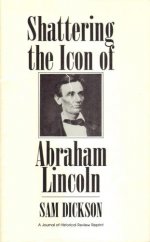Duke University admits, notably, Ibn Khaldun is to the Arab history as Josephus is to the Jewish history.
Duke University Team
Research Africa Reviews Vol. 5 No. 1,
April 2021
These reviews may be found on the RA Reviews website at:
2021/
Slavery, Theology, and Anti-Blackness in the Arab World
10 page study
A Literature Review by: Moses E. Ochonu, Cornelius Vanderbilt Chair in History, Professor of
African History, Vanderbilt University
HEAVILY SNIPPED
PG 11
Anti-Black Ideational Production in the Arab World
Long before the beginning of the Atlantic slave trade and its imbrication in post-Enlightenment
white supremacy, Arab philosophers, geographers, and travelers wrote extensive commentaries on
Black African societies and kingdoms they observed. These writings are filled with the casual,
normalized anti-Black racism that are today commonplace in the Arab world.
Ibn Khaldun was arguably the most respected and influential Arab philosopher and scholar
of the Middle Ages. Yet his (reference) characterization of African societies repeated the prevalent
popular Arab descriptions of Africans as excitable, emotional, dirty, morally unclean, childlike,
and, to use his own words, “worse than dogs.” His many racist views on Africans are distilled in
this one excerpt from his magnum opus,
The Muqaddimah:
We have seen that Negroes are in general characterized by levity, excitability,
and great emotionalism. They are found eager to dance whenever they hear a
melody. They are everywhere described as stupid. . . . Beyond [the Sahel] to the
south there is no civilization in the proper sense. There are only humans who are
closer to dumb animals than to rational beings. They live in thickets and caves,
and eat herbs and unprepared grain. They frequently eat each other. They cannot
be considered human beings.
PG 12
Ibn Khaldun (exact reference) saw the enslavement of Africans as a logical outgrowth of their
childlike docility. Africans, he argued, were suited to slavery:
Therefore, the Negro nations are, as a rule, submissive to slavery, because
[Negroes] have little [that is essentially] human and have attributes that are quite
similar to those of dumb animals, as we have stated.
Other Arab and Persian writers with intellectual influence in the Arab world spewed racist
characterizations of Africans that mirrored the popularly held views in their own societies about
Africans as savages and sub-human entities. Here are a few samples from this menu of Arab racist
intellectual production on Africa:
Of the neighbors of the Bujja, Maqdisi had heard that “there is no marriage
among them; the child does not know his father, and they eat people—but God
knows best. As for the Zanj, they are people of black color, flat noses, kinky
hair, and little understanding or intelligence (Maqdisi, also known as Al-
Muqaddasi (fl. 966 CE), Kitab al-Bad’ wa-Tarikh, vol. 4)
If (all types of men) are taken, from the first, and one placed after another, like
the Negro from Zanzibar, in the southernmost countries, the Negro does not
differ from an animal in anything except the fact that his hands have been lifted
from the earth—in no other peculiarity or property—except for what God
wished. Many have seen that the ape is more capable of being trained than the
Negro, and more intelligent. (Philosopher-theologian Nasir al-Din Tusi (1201–
1274), Tasawwurat (Rawdat al-Taslim))
What we see in these textual anti-Black racisms is that they reflected and reinforced
existing anti-Black attitudes in the natal societies of the writers. Institutions and structures in those
societies policed this racial hierarchy and reinforced anti-Blackness. There is another point worth
making as a way of further situating these texts in the anti-Blackness idioms that were either
entrenched or ascendant in the Arab world at the time that these writings were produced. Like the
anti-Blackness contained in European travelers’ texts on African societies, Arab textual anti-
Blackness was ambivalent. On one hand, the writings remarked positively on African natural
resources such as gold. On the other hand, they unleashed a maelstrom of textual dehumanization
on Africans.
Africans emerge in these texts as rich in natural resources but culturally deficient.
The trope of backward, primitive, childlike but naturally endowed Africans did not begin with
European racists. It began with racist Arab writers. This ambivalent bromide of dehumanization
and resource-focused backhanded compliment was amplified to new decibels in the period of the
European encounter with Africa, beginning in the fifteenth century.
There is a related point worth making here. the Hamitic myth, which ...
DOWNLOAD to read if interested HERE





